US Navy-owned FLIP Research Platform Retired from Service
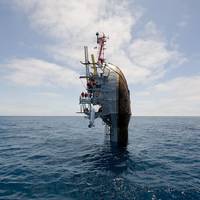
A dynamic era in naval oceanography recently ended as the iconic Floating Instrument Platform — popularly known as FLIP — was officially retired from service.Built in 1962 with funding from the Office of Naval Research (ONR), FLIP helped generations of scientists and oceanographers better understand the mysteries of the sea, including internal waves, air-sea interaction and long-range sound propagation. Sadly, age and exorbitant life-extension costs resulted in the platform being disestablished.On Aug.
US Coast Guard Cutter Healy, Scientists Deploy Ice Stations
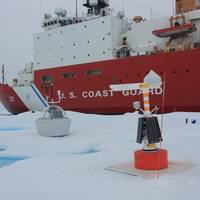
U.S. Coast Guard Cutter Healy (WAGB 20) crew and embarked researchers ventured onto a floe of multi-year ice for the first of three multi-instrument ice stations in the Arctic Ocean Basin late July and early August.As the Healy carefully approached and maintained position alongside an ice floe above 77 degrees north, the crew and a team of scientists, working in cooperation with the Office of Naval Research, (ONR) offloaded a diverse collection of equipment on to the floe carefully…
Interview: Brendan Smith, President, Seaward Services

Brendan Smith brings more than a decade of maritime experience to his role as president of Seaward Services, a marine services company specializing in the operation, maintenance and repair of government and privately owned vessels. The company is part of the Hornblower Group.During his 6.5 years with the U.S. Navy, he served aboard the nuclear-powered submarine USS Santa Fe, and his roles included chemistry and radiological controls assistant (CRA), quality assurance officer (QAO) and combat operations instructor.
Armach Robotics Set to Take the Pole Position on Ship Hull Maintenance, Intelligence
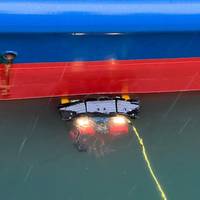
Melding advanced software, intelligence, robotics and navigation, Armach Robotics – a spinoff of Greensea Systems – leads a step change in ship hull cleaning and maintenance with its Robotics as a Service model. Ben Kinnaman, the CEO of Greensea Systems, explains.Ben, to start us off, please give us a background on Armach Robotics? Where did the idea come from and where are we today?Greensea Systems is a software company, well-known for our software platform on ocean robotics. We're also well-known for our unique navigation and autonomy solutions.
Eye on the Navy: Navy extends Life for Research Ships, but Says Farewell to FLIP

The U.S. Navy’s three Global class oceanographic research ships (AGORs) have received a new lease on life. The ships-- R/V Thomas G. Thompson (AGOR 23), R/V Roger Revelle (AGOR 24) and R/V Atlantis (AGOR 25)-- which entered service between 1991 and 1998--were built with 30-year expected service lives. Thanks to extensive overhauls on all three they have been returned to service with another 15 years of useful service.AGOR 23 is operated by the University of Washington; AGOR 24 is operated by Scripps Institution of Oceanography…
NSWC Crane, Hydronalix Sign CRADA for AISUM Prize Challenge Hardware Support

Naval Surface Warfare Center, Crane Division (NSWC Crane) and Hydronalix, Inc. of Green Valley, AZ, signed a Cooperative Research And Development Agreement (CRADA) entitled AISUM Prize Challenge Hardware Support. Agreement number: NCRADA-NSWCCD-21-419. NSWC Crane is hosting an Artificial Intelligence for Small Unit Maneuver (AISUM) Prize Challenge with contestants from industry and academia. With the strategic goals of developing software that can be supported by a variety of hardware, non-proprietary robotic autonomy baseline component architecture and software were required.
The Value of Friends in “High-Latitude” Places
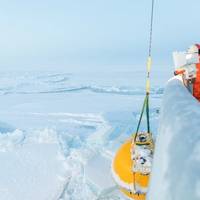
Who do you call when you need a job done on short notice, in total darkness, under 100-percent ice cover, thousands of meters at the bottom of the sea? In the case of the U.S. Office of Naval Research (ONR), you call your friends in Norway.That is exactly what the Chief of Naval Research Rear Admiral Lorin C. Selby did when he enlisted the help of the Norwegian Coast Guard icebreaker and offshore patrol vessel, the CGV Svalbard, to retrieve oceanographic moorings containing irreplaceable data.
Subsea Defense: Navy Deepens Commitment to Underwater Vehicles
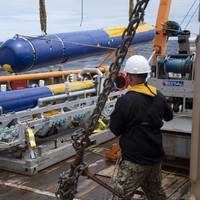
The U.S. Navy uses unmanned and robotic underwater vehicles for a multitude of functions, including environmental sensing, mine hunting, and salvage. The Navy plans to evolve an unmanned systems operating concept that is platform agnostic and capable of operating in highly complex contested environments with minimal operator interaction.The most recent edition of the Navy’s Unmanned Systems (UxS) Roadmap was issued in 2018, and a new version is expected in the near future. The 2018 document states that UxS will operate in every domain…
Ship Repair: Inside the $60m Refit of RV Roger Revelle
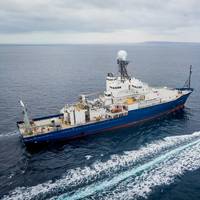
This month MR dives inside the $60 million refit of RV Roger Revelle, a project which leverages a treasure trove of ‘lessons learned’ from recent refits in the academic research vessel fleet and highlights the value of slimming the vendor list.Research vessel (R/V) Roger Revelle is back at work after a midlife refit involving upgrades from top to bottom, bow to stern. The ship is owned by the Office of Naval Research and has been operated by Scripps Institution of Oceanography at the University of California San Diego since 1996. It is one of the largest ships in the U.S.
US, UK Tighten Navy Partnership
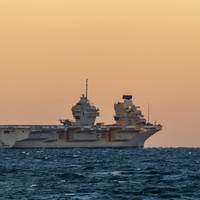
The United Kingdom’s Royal Navy and the United States Navy announced a new partnership to accelerate the adoption of novel ideas and technologies, marking a unique chapter in the historic relationship between the two nations.A newly established London Tech Bridge—with both nations as full partners—will serve as a command post for innovation for the two Navies as they work toward interchangeability in everything from technology development to deployment and operations.Royal Navy Second Sea Lord Vice Adm. Nick Hine, and the Hon. James “Hondo” Geurts, U.S.
Hepburn and Sons Adds Senior Naval Talent

The Hepburn and Sons LLC team welcomed David Rice, CAPT David Bauer, USN (Ret), and Gary Loberg as their newest members. David Rice serves as Senior Consultant, Material Science. David Bauer will serve as the Senior Manager, Material Science. Gary Loberg serves as Senior Manager, Advisory Services.David Rice comes to Hepburn and Sons, LLC after a career spanning 45 years at Newport News Shipbuilding (NNS). During his time at NNS he served as the Manager of Contracted Research & Development and was responsible for Research & Development Programs funded by ONR/ManTech…
Naval Shipyards Recruiting Robots
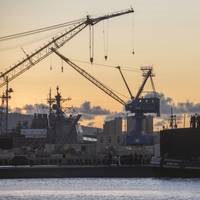
Inspecting fuel and ballast tanks. Sand-blasting old paint coatings and applying new ones. Removing corrosion on ships, submarines, aircraft and other vehicles.These are some of the unpleasant jobs in naval shipyards and maintenance facilities that could be made safer by pairing human workers with robots. Experts say this could improve the speed and efficiency with which the U.S. Navy sustains its assets—and expand the career paths of current workers (and create new jobs) by teaching them to operate…
Trieste: 60th Anniversary of Deepest Dive
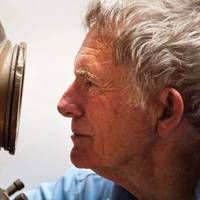
Plunging into the deep, dark abyss of the Pacific Ocean’s Mariana Trench, U.S. Navy Lt. Don Walsh and Swiss engineer Jacques Piccard heard a loud cracking sound in their vessel—the bathyscaphe Trieste, which the Office of Naval Research (ONR) purchased for scientific observations.Already 30,000 feet below sea level, Walsh and Piccard faced the ultimate decision—risk their lives to become the first people to travel to the deepest part of the ocean, the Challenger Deep, or return to safety.The crack had scarred one of Trieste’s outer plexiglass panels.
NATO RV Alliance is not just quiet, it’s ice-capable
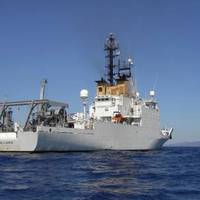
An interview with Ian Sage, director for marine operations, NATO Center for Maritime Research and Experimentation, La Spezia, Italy.NATO’s 3,100-ton, 305-foot research vessel NRV Alliance has been a leading platform for underwater acoustics research to the benefit of NATO navies. The ship operated with a civilian crew under the German flag for many years for the NATO SACLANT Center, later renamed the NATO Undersea Research Center, and now known as the NATO Center for Maritime Research and Experimentation. Now Alliance flies a new flag, and has a broader mission.
Autonomous Vessels: FAU Gets $1.25m for Research
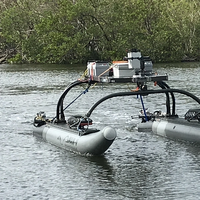
Florida Atlantic University’s College of Engineering and Computer Science has been awarded a $1.25 million grant by the United States Office of Naval Research (ONR) to undertake research in support of autonomous unmanned marine vehicle platforms for coastal surveillance, coastal surveys, target tracking and protection of at-sea assets. The five-year project will entail developing unmanned surface vehicles that serve as “motherships” for unmanned underwater vehicles and aerial drones…
US Navy-owned Research Vessel Back in Action
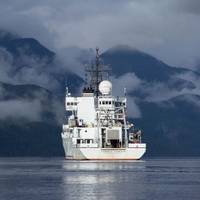
Research vessel (R/V) Thomas G. Thompson (AGOR-23) has gained a new lease on life following a recently completed 18-month upgrade to improve operating systems, bolster its research capabilities and extend its working life for the U.S. Navy and scientific organizations.The Navy-owned vessel has been operated and maintained University of Washington since 1991, under a charter lease agreement with the Office of Naval Research (ONR)-which manages the ship on behalf of the service.The $52 million refit…
Video: US Navy Tests Autonomous Swarmboats
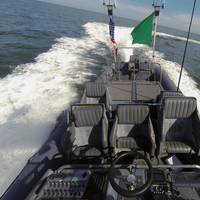
The U.S. Navy is examining new possibilities for autonomy in future naval missions, putting autonomous unmanned vessels to the test in a recent demonstration in the lower Chesapeake Bay. Officials from the Office of Naval Research (ONR), together with partners from industry, academia and other government organizations, leveraged a combination of high-tech software, radar and other sensors to get a “swarm” of rigid hull inflatable boats (RHIBs) and other small vessels – “swarmboats” – to collectively perform autonomous patrol missions with only remote human supervision.
NASA Welding Technologies Could Revolutionize Workboat Fabrication
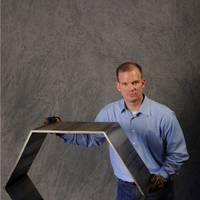
Solid-State Welding Processes Being Developed for NASA Manufacturing Programs Could Significantly Reduce Workboat Fabrication CostsWhether it is for a tug boat, cargo vessel, or an offshore supply ship, much of the workboat fabrication industry is located along the Southern Coast of the U.S. But a visit to any one of the workboat facilities in that area (or any other in the country) would reveal antiquated and archaic fabrication processes used seventy years ago. The workboat manufacturing process is very expensive, labor intensive, and has not really changed since World War II.
RV Sally Ride Enters Dry Dock for Maintenance
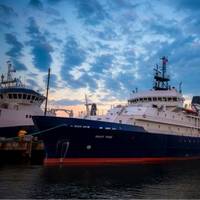
The Sally Ride, a Neil Armstrong Class Auxiliary General Oceanographic Research (AGOR) vessel, dry docked at Bay Ship and Yacht on April 15, 2017, to carry out modifications to superstructure and to perform general vessel maintenance. Named for the late astronaut Sally Ride, the ship is 238 feet long and incorporates the latest technologies, including high-efficiency diesel engines, emissions controls for stack gases, and new information technology tools both for monitoring shipboard systems and for communicating with the world.
Seawater Carbon Capture Process Receives US Patent
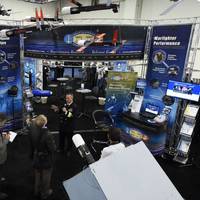
The Electrolytic Cation Exchange Module (E-CEM), developed at the U.S. Naval Research Laboratory (NRL), provides the Navy the capability to produce raw materials necessary to develop synthetic fuel stock at sea or in remote locations. The NRL, Material Science and Technology Division, has been granted the first U.S. patent for a method to simultaneously extract carbon dioxide and hydrogen from seawater. This single process provides all the raw materials necessary for the production of synthetic liquid hydrocarbon fuels.
ENSTA Bretagne wins SAUC-Europe ‘16 at CMRE
Team ENSTA Bretagne from France won the 11th edition SAUC-E competition, the Student Autonomous Underwater Vehicle Challenge - Europe. The 2nd prize went to the Tom Kyle team, from the University of Applied Sciences of Kiel (Germany). The UNIFI team with the robot Marta from the University of Florence was awarded the 3rd prize. The other prizes were awarded to: the AUGA team, from the University of Vigo with ACSM, that won the “Collaborator Award”; the ROBOTUIC team, from International University of Canarias, that won the “Rookie of the Year Award”; the ENSTA Bretagne team 2, from France, that won the “Tenacity Award”; the UnivPM team…
This Day In Naval History: August 1

1801 - The schooner, USS Enterprise, commanded by Lt. Andrew Sterett, encounters the Barbary corsair, Tripoli, west of Malta. After a three-hour battle, USS Enterprise broadsides the vessel, forcing Tripolis surrender. 1849 - Pope Pius IX and King Ferdinand of the Two Sicilies, briefly visit USS Constitution and marks the first time that a Roman Catholic pope steps foot on American territory. 1921 - A high-altitude bombsight, mounted on a gyroscopically stabilized base was successfully tested at Torpedo Station, Yorktown, Va. This test was the first phase of Carl L.
Will Naval Operations Heat up in the Arctic?
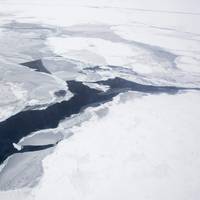
As diminishing sea ice in the Arctic Ocean expands navigable waters, scientists sponsored by the Office of Naval Research have traveled to the region to study the changing environment and provide new tools to help the U.S. Navy operate in a once-inaccessible area. "This changing environment is opening the Arctic for expanded maritime and naval activity," said Rear Adm. Mat Winter, chief of naval research. A recent announcement from the National Snow and Ice Data Center revealed…





